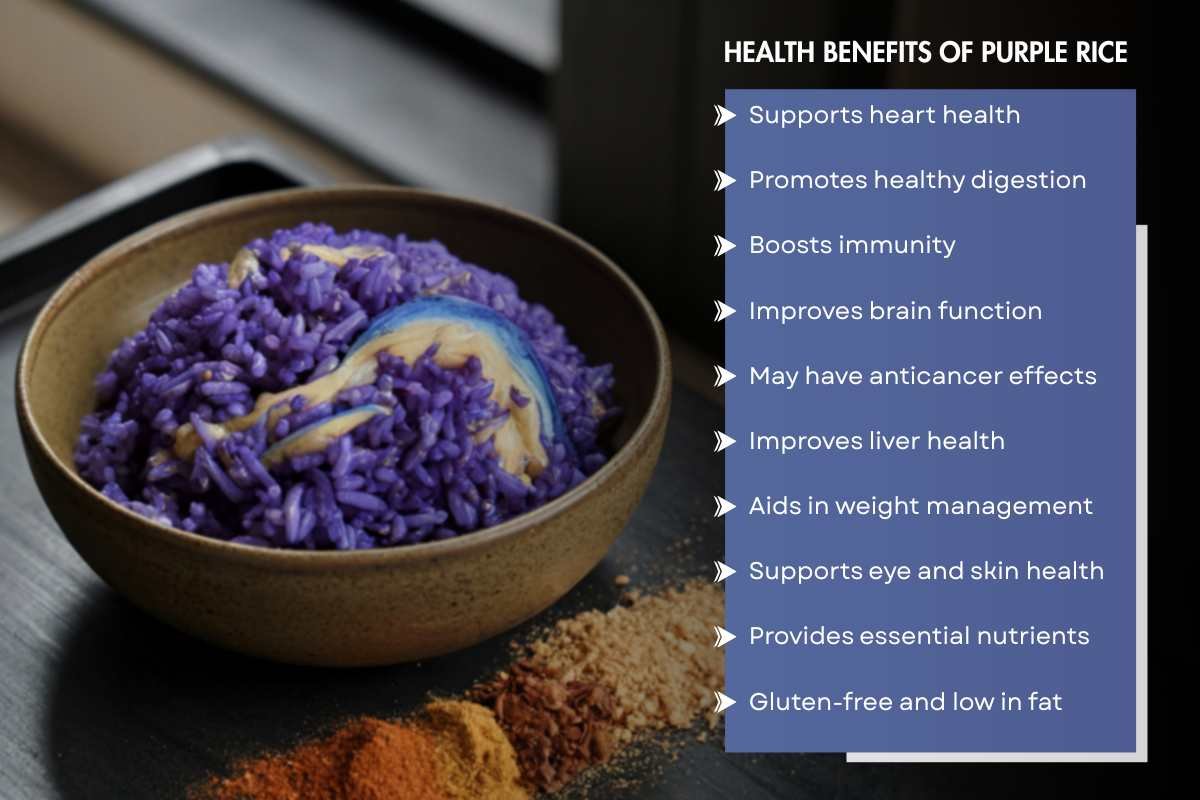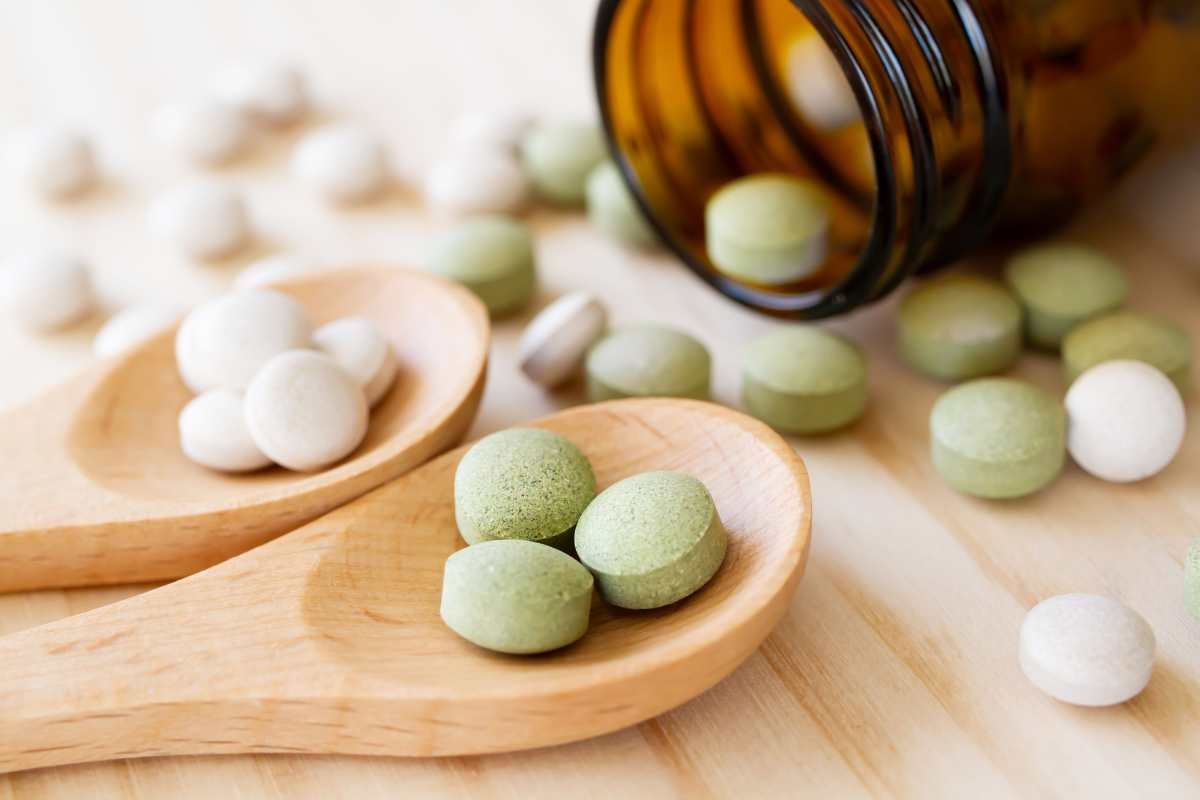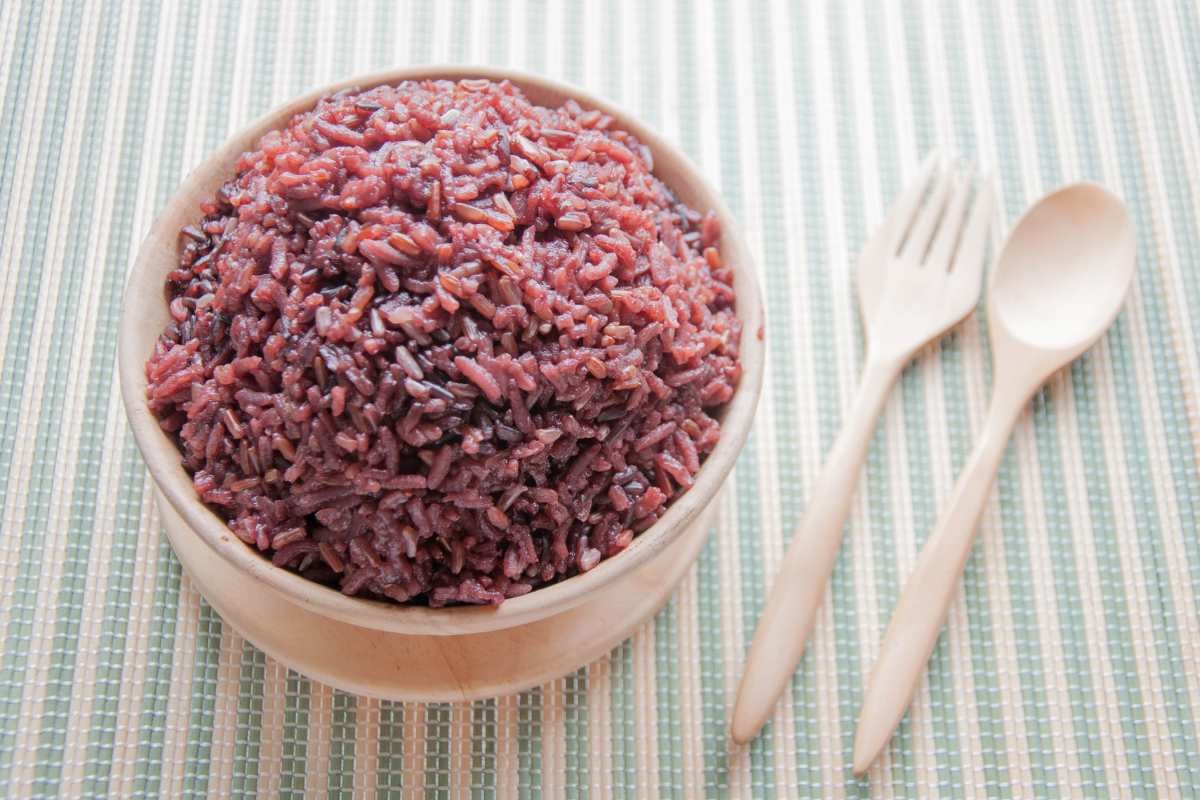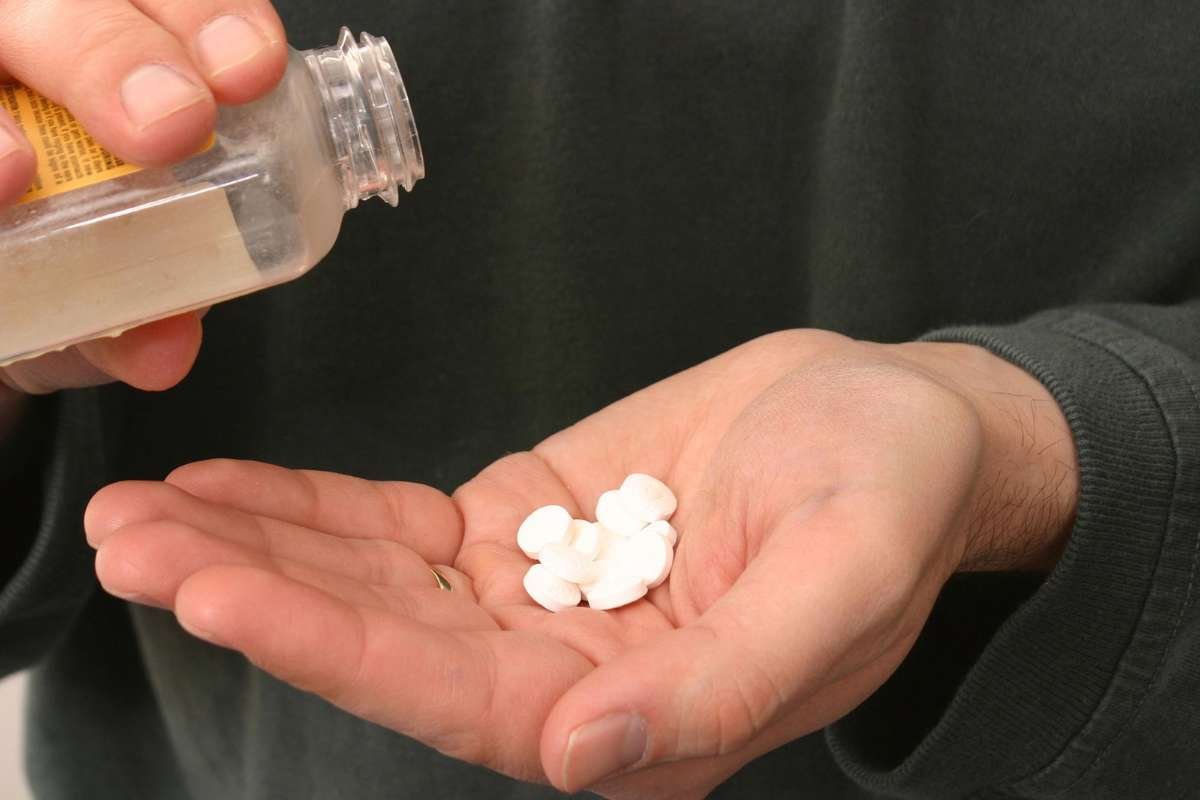Of the endless grains that are present on our table. You have probably seen our familiar staples: white, brown, and maybe even the especially beautiful, inky black. However, a more colorful candidate is quietly making its way to kitchens and health blogs. It is generating another wave of culinary interest, with purple rice. With its bright color, it will surprise you if you think you have tried rice. Have you ever noticed this intensely colored grain? Or thought about the powerful secrets it has?
We’ll forget everything you think you know. Because this is not just another bowl of grains. Why is it such a deep royal color? And why is this Rice sometimes called the mythical, almost legendary, “Forbidden Rice”? What are the extraordinary properties to justify the name and limited consumption?
Join us as we learn the cultural background. Reveal the science behind its unique color. And find the fascinating details and health benefits of this ancient grain that was once forbidden.
What is Purple Rice? Nutritional Profile
Purple rice, also known as black rice or forbidden rice. It is an ancient heirloom grain originating from Japanese rice. It is technically a type of grass seed. Its cultivation can be traced back as far as 2500 B.C. The darkly-colored grains may have been the result of a mutated rice gene. Renowned for its vibrant, inky black color. It turns deep purple when cooked. Its striking hue derives from high anthocyanin content. They are potent antioxidants similar to those found in blueberries.
This contributes to both its health benefits and unique, nutty, slightly sweet flavor. Traditionally reserved for royalty due to its rarity. It is now appreciated globally as a nutritious, gluten-free whole grain. It supports heart, liver, and digestive health. With added benefits for the immune system and cognitive function.
| Nutrient | Per 100g Cooked | Key Highlights |
| Calories | 121 kcal | Low calorie density |
| Protein | 2–4 g | Moderate, higher than white rice |
| Fat | 1 g | Low |
| Carbohydrates | 24–39 g | Main energy source |
| Fiber | 1–2 g | Higher than white rice |
| Iron | 2 mg (19% DV) | Much higher than white rice |
| Magnesium | 39 mg (9% DV) | Important mineral |
| Manganese | 1 mg (48% DV) | High antioxidant value |
| Folate (B9) | 47 µg (12% DV) | Supports cell function |
| Potassium | 79 mg (2% DV) | Electrolyte balance |
| Zinc | 1 mg (7% DV) | Immune and metabolic benefits |
| Antioxidants | Very high | Anthocyanins are, main distinguishing nutrient |
Health Benefits of Purple Rice:
Purple rice is highly beneficial to human health. Due to its high amounts of anthocyanins, fiber, and essential minerals. Here are some benefits that explain the effects on heart health, immunity, digestion, and disease prevention.

- Supports heart health: Anthocyanin antioxidants may help reduce cholesterol, lower blood pressure. Also, minimize the risk of atherosclerosis and heart disease.
- Promotes healthy digestion: Its high fiber content helps in regular bowel movements. This prevents constipation and supports overall digestive health.
- Boosts immunity: Studies show that it can increase the number of immune cells. And help protect against infections and chronic inflammation.
- Improves brain function: Antioxidants in this rice may improve memory. It also supports cognitive function. And potentially reduce the risk of neurodegenerative diseases. Such as Alzheimer’s and dementia.
- May have anticancer effects: Animal and in vitro studies indicate that anthocyanins from this rice may help suppress cancer cell growth. It has chemopreventive effects. Particularly in the liver and blood.
- Improves liver health: Regular consumption has been associated with better liver function and a lower risk of liver disease.
- Aids in weight management: The fiber and protein in whole-grain purple rice. It can promote satiety, reduce appetite, and help with weight control.
- Supports eye and skin health: Antioxidants help protect the eyes from degenerative disease and the skin from premature aging and sun damage.
- Provides essential nutrients: It is rich in iron, magnesium, manganese, and other key minerals. They are needed for red blood cell production, metabolism, and bone health.
- Gluten-free and low in fat: Suitable for people with gluten sensitivity. Or those looking for a low-fat, whole-grain alternative.
Also Read:
- Brown, Black, or Red? The Healthiest Types of Rice May Shock You
- Is Eating Raw Rice Safe? Here’s What You Need to Know
- Quinoa vs Rice: Which One Truly Deserves a Place on Your Plate?
Culinary Uses of Purple Rice:
Purple rice is a versatile ingredient. It is widely used in both traditional Asian cuisines and modern fusion dishes. It adds a nutty flavor, chewy texture, and vibrant color to meals. This makes it suitable for both savory and sweet recipes.
Here are some ways you can incorporate it into your meals:
- Steamed or mixed rice dishes: In Korean cuisine, purple rice (heukmi bap) is often made by mixing black glutinous rice. Along with white short-grain rice. It creates a beautiful lavender hue. This is served alongside everyday meals.
- Desserts: Southeast Asian desserts such as Bubur Pulut Hitam. Also known as sweet black rice pudding with coconut milk. Purple jasmine coconut rice is a popular breakfast or snack option.
- Side dishes: It can be cooked with garlic, onion, butter, and vegetables like red cabbage. This creates vibrantly colored, savory side dishes. It can pair well with meats, seafood, or tofu.
- Salads and grain bowls: Cooled cooked forbidden rice forms a nutrient-dense base for salads or Buddha bowls. It is combined with ingredients like avocado, roasted vegetables, and legumes. This helps add texture and protein.
- Sushi and wraps: Sticky varieties of this rice are sometimes substituted for white sushi rice. This gives rolls a visually striking appearance. Adding more fiber and antioxidants.
- Breakfast porridge: Similar to oatmeal. This rice porridge is cooked with milk or coconut cream. It is topped with fruits and seeds. This makes it a wholesome, antioxidant-packed breakfast.
Usage in Skincare and Supplements:
Purple rice is increasingly used in skincare and supplements. They are valued for their antioxidant-rich extract and moisturizing benefits. Here are some of the common uses:
Purple Rice in Skincare
-.jpg)
- Moisture retention: Extract from rice helps preserve hyaluronic acid levels in the skin. Boosting moisture and plumpness. This reduces the appearance of fine lines and wrinkles.
- Barrier repair: Formulations enriched with this rice strengthen the natural skin barrier. This improves resilience and repairs damage from environmental stress.
- Brightening and texture: Products like gel creams and sleeping masks. That are made rice extracts brighten the skin, refine pores, and smooth uneven texture.
- Anti-inflammatory: Anthocyanins in this unique rice soothe irritation, calm redness. It benefits sensitive or acne-prone skin through its anti-inflammatory action.
- Antioxidant protection: These antioxidants shield skin cells from free radicals and UV-induced damage. This supports a youthful complexion and better elasticity.
Purple Rice in Supplements

- General wellness: Forbidden rice supplements, commonly formulated as capsules or powders. They deliver concentrated anthocyanins for whole-body antioxidant support.
- Disease prevention: Emerging research points to these rice extracts potentially inhibiting tumor growth. This helps in glucose regulation for diabetes management. It also supports liver health through antioxidant action.
- Immune enhancement: Its nutritional profile. Such as rich in iron, magnesium, and vitamin E. It bolsters immunity and metabolic health.
Also Read:
- Jasmine Rice vs White Rice: The Surprising Differences You Didn’t Know
- Is Basmati Rice Healthy? Food or Just a Flavorful Staple
- Is Rice Gluten-Free? The Truth You Should Know Before Your Next Meal
Case Study: How Anthocyanin-Rich Purple Rice Are Transforming Nutrition and Health
This case study explores how purple rice has evolved from a traditional Asian staple. And turn into a modern global superfood. Rich in anthocyanins. This is a potent antioxidant responsible for its deep purple hue. This grain offers remarkable anti-inflammatory, anti-obesity, and anti-aging benefits.
It highlights how genetic makeup, cultivation conditions, and post-harvest processing influence anthocyanin levels. This is directly affecting both nutritional value and market potential. With rising global demand, this rice is now seen as a functional food. And also a natural source for pharmaceuticals, cosmetics, and bioactive packaging materials. The paper positions this rice as a promising ingredient for improving human health. And also encourage sustainable agriculture and food innovation worldwide.
Source: https://pmc.ncbi.nlm.nih.gov/articles/PMC8225073/
Conclusion
The path from “Forbidden Rice,” once solely for emperors. It has become a superfood of global importance. Its origins have revealed the secret behind the intensely purple coloring. The information and imagery reveal that the purple color is a badge of courage. This indicates a valuable stockpile of anthocyanin antioxidants, fiber, and minerals. It encourages heart and brain health, among other things.
Whether you fold the nutty flavor into a grain bowl, enjoy it discreetly as a dessert. Or utilize the extracts as an ingredient in skincare products. It is not a secret. Incredibly, it is delicious, reasonably priced, and scientifically intelligent. All while showing us that the most ancient of grains often contain the modern keys to wellness.
FAQs:
1. Can Purple Rice help with weight loss?
Yes, when eaten in moderation. Its high fiber and protein content promote fullness. This helps control appetite and prevent overeating. Plus, its low glycemic index means it releases energy slowly. This also keeps blood sugar levels steady.
2. How should I cook Purple Rice for the best texture and color?
Rinse the rice thoroughly before cooking to remove excess starch. Then cook it in a 2:1 water-to-rice ratio. It should be slightly more than white rice. Cook for about 30–40 minutes. To preserve its vibrant color and nutrients, avoid overcooking or soaking it too long.
3. Where can I buy authentic Purple Rice?
You can find purple rice at health food stores, Asian markets, and online retailers. Look for organically grown or Thai or Korean purple rice varieties. They offer the best flavor and anthocyanin content.






